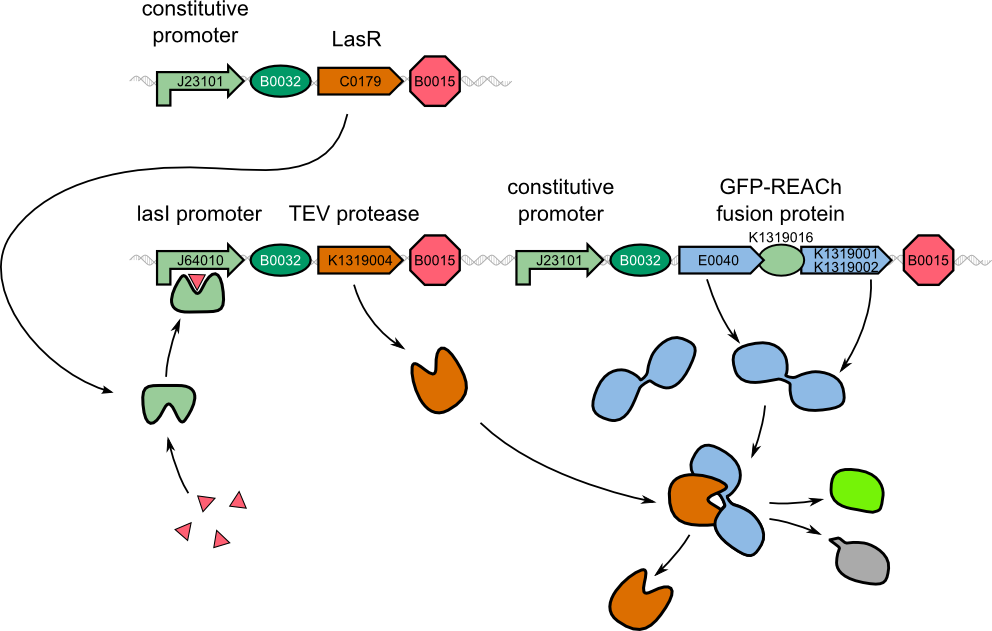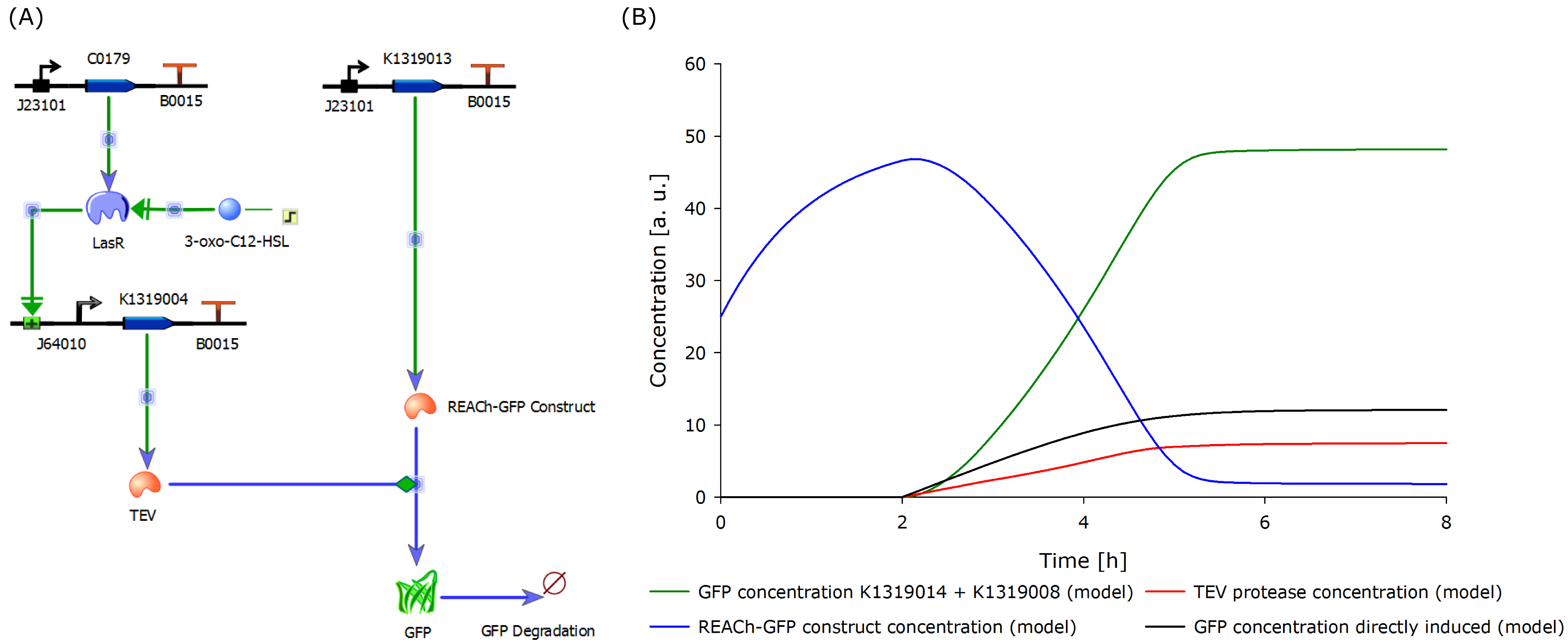Team:Aachen/Project/Model
From 2014.igem.org
(Difference between revisions)
(→Modeling) |
(→Modeling) |
||
| Line 9: | Line 9: | ||
<center> | <center> | ||
| - | {{Team:Aachen/Figure| | + | {{Team:Aachen/Figure|Aachen 14-10-16 REACh approach iFG.png|align=center|title=Our novel biosensor approach|subtitle=Expression of the TEV protease is induced by HSL. The protease cleaves the GFP-REACh fusion protein to elicit a fluorescence response.|width=900px}} |
</center> | </center> | ||
Revision as of 20:02, 16 October 2014
 "
"

